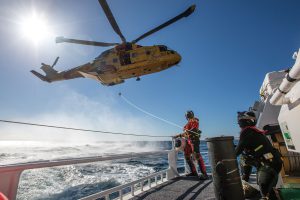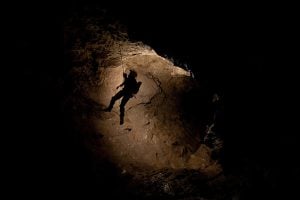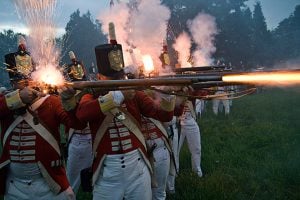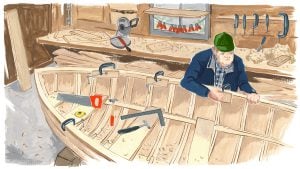
People & Culture
Safety first, service always: The Canadian Coast Guard turns 60
A celebration of the Canadian Coast Guard’s renowned search-and-rescue capabilities — and more — as the special operating agency turns 60
- 4392 words
- 18 minutes
This article is over 5 years old and may contain outdated information.
History

It’s difficult to imagine that a beach filled with windsurfers and sun-worshippers once hosted one of World War II’s bloodiest battles.
But a Queen’s University physicist and one of Canada’s top international photographers are working on a project that reveals traces of the battle are all over the beaches — they are just too small to see with the naked eye.
Photographer Donald Weber and physicist Kevin Robbie are working on a photography project examining miniscule grains of sand from the beaches of Normandy. They are looking for the tiny scraps of evidence leftover from D-Day, the 1944 joint allied invasion that marked the turning point that led to the eventual victory over Nazi German forces.

“It really was a true collaboration between an artist and a scientist,” Weber says. As he combed the beach in search of photographic opportunities on a macro-scale, the only Canadian among the 22 photographers that make up the elite VII Photo Agency, he gathered sand samples and sent them back to Robbie in Kingston, Ont.
Robbie then took the project to the miniscule level by putting the grains underneath the lens of equipment like an electron microscope with a high-resolution camera worth half a million dollars. Among ordinary sand grains and organic matter, the microscope revealed rounded spheres of iron no larger than a period on a printed page. Although these microspherules are sometimes produced after the metal is liquefied from meteorites exploding in the upper atmosphere, they can also occur with bomb and artillery explosions.
“Some of them stuck to each other in midair,” Weber says.

The results are scattered all across the beaches of Normandy, especially on Omaha beach which played host to a particularly large battle.
“In my work, I’m always looking at small things that I don’t see other than through the electron microscope, so it’s neat for me to see a bit of history,” Robbie says. “The remnants of this battle over 60 years ago are still sitting around in the sand.”
The project is a true collaboration between art and science, displaying coloured microscopic photos of iron leftover from the Second World War. “(Weber) sees these tranquil beach scenes and, using the microscopes, I can see the shrapnel in the beach sand,” Robbie says.
Although they’ve already shown some of their work at a photo-reporter festival in Saint-Brieuc Bay, France, the project is still very much in progress. Weber is planning another trip this spring armed with a camera-equipped drone to capture the beaches from the viewpoint of the invading forces.
Robbie is also interested in seeing if he can tell the difference between axis and allied steel. “A lot of the answers are just hidden from view in the beautiful landscapes that (Weber) takes,” he says.
But there’s certainly no rush. As Weber points out, “these sand grains are probably not going to last for 100 years. They are going to last for 100,000 years.”
Are you passionate about Canadian geography?
You can support Canadian Geographic in 3 ways:

People & Culture
A celebration of the Canadian Coast Guard’s renowned search-and-rescue capabilities — and more — as the special operating agency turns 60

Exploration
Caving: The ultimate underground sport

History
Soldiers, descendants of Loyalists and history buffs recreate a battle to demonstrate why the War of 1812 is still important today.

Environment
The animated short film called Last Fish, First Boat recounts the 1992 cod moratorium